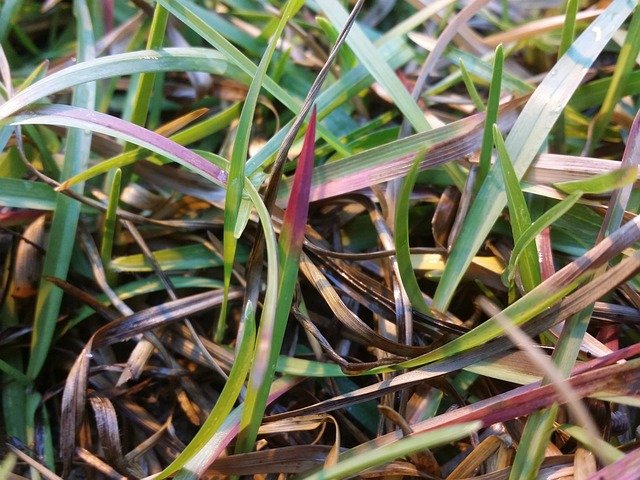
Nitrogen (N)
Nitrogen is one of the major nutrients commonly applied as fertilisers. Plants absorb Nitrogen in the form of ammonium or nitrate which can be readily dissolved in water and leached away from soil.
Nitrogen is needed by plants to promote rapid growth especially for fruit and seed development. Also, it increases leaf size and quality, and hastens plant maturity.
Deficiency symptoms: General chlorosis of entire plant to a light green followed by yellowing of older leaves proceeding towards younger leaves. Plants become spindly, stunted and secondary shoots develop poorly if the initial symptoms are not corrected.
Phosphorus (P)
Phosphorus is the second major component in fertilisers. Plants absorb Phosphorus in the form of phosphate.
Phosphorus is needed by plants to promote photosynthesis, protein formation, seed germination, bloom stimulation and budding. It also hastens maturity.
Deficiency symptoms: Purple or bronze colouration on the underside of older leaves due to the accumulation of the pigment, Anthocyanin. Affected plants develop very slowly and are stunted compared to normal plants.
Potassium (K)
Potassium is the third major component in fertilisers. Plants absorb Potassium as an ion, which can be readily leached and lost through run-off from the soil.
Potassium is needed by the plants to promote formation of sugars for protein synthesis, cell division in plants and for root development. It also increases the plant’s resistance to diseases.
Deficiency symptoms: Leaf edge chlorosis on new matured leaves followed by interveinal scorching and necrosis from leaf edge to the midrib as deficiency increases. The chlorosis in potassium deficiency is irreversible even if potassium is given to plants.
Magnesium (Mg)
Magnesium is a structural component of the chlorophyll molecule.
Magnesium is needed by plants to promote the function of plant enzymes to produce carbohydrates, sugars and fats and in the regulation of nutrient absorption.
Deficiency symptoms: Older leaves are chlorotic in between veins, often known as interveinal chlorosis. In severe deficiency, plant growth rate drops, leaf size is reduced, and lower leaves are shed.
Calcium (Ca)
Calcium is a constituent of plant cell wall and provides structural support to cell walls. It is immobile within plants and remains in the older tissue throughout the growing season. Hence first symptom of deficiency appears on the younger leaves and leaf tips.
Calcium is needed by plants to produce new growing points and root tips.
Deficiency symptoms: New foliage, buds and roots have stunted growth. Younger leaves curl downwards with browning of leaf edges and leaf tips, also known as tip burn. In some plants, they may also show abnormally green foliage. Roots become short and stubby
ron (Fe)
Iron deficiency is similar to Magnesium, except that it appears on young leaves and shoots instead of older leaves.
Iron is needed by plants for the synthesis of chloroplast proteins and various enzymes.
Deficiency symptoms: Light green to yellow interveinal chlorosis on newly emerging leaves and young shoots. It is common to see shoots dying from the tip inwards. In severe cases, newly emerged leaves may reduce in size and turn nearly white, with necrotic spots.
Manganese (Mn)
Manganese acts as an enzyme activator for nitrogen assimilation.
Manganese is needed by plants for photosynthesis, respiration and enzyme reactions.
Deficiency symptoms: Newly emerging leaves exhibit a diffused interveinal chlorosis with poorly defined green areas around the veins. Chlorosis and necrotic spotting are common symptoms. In severe deficiency, new leaves become smaller and tip dieback can occur
Zinc (Zn)
Plants require zinc to activate plant growth regulators, particularly Auxin and Indole Acetic Acid (IAA).
Zinc is needed to activate plant growth regulators.
Deficiency symptoms: Chlorosis, bronzing or mottling of younger leaves. Interveinal chlorosis of the young leaves followed by reduced shoot growth with short internodes, as well as small and discoloured leaves giving the affected part a rosette appearance.
Boron (B)
Boron is absorbed from the soil by plants as borate.
Boron is needed in the process of cell differentiation at the growing tips of plants where cell division is active.
Deficiency symptoms: Plants become stunted and deformed. Proliferation of side shoots known as ‘witches broom’ can be observed as the main stem falls to ensure the growth of the lateral shoot stays dormat. This is known as the loss of apical dominance. In flowering shrubs, new growth becomes dark green and they develop cupped or puckered small brittle leaves with short internodes.

VITAMIN DEFICIENCY EXPLAINED

